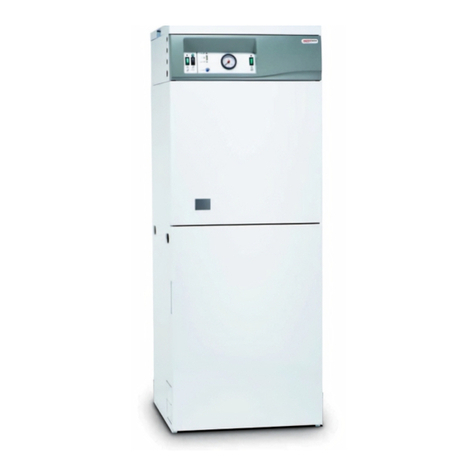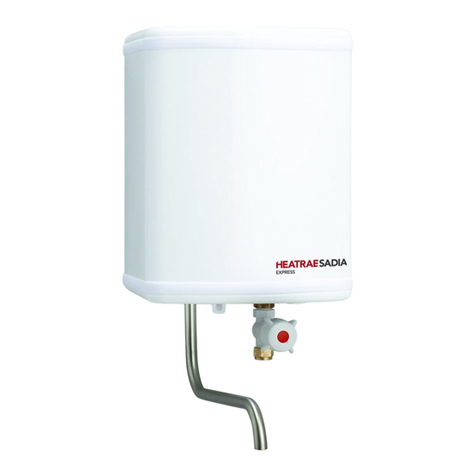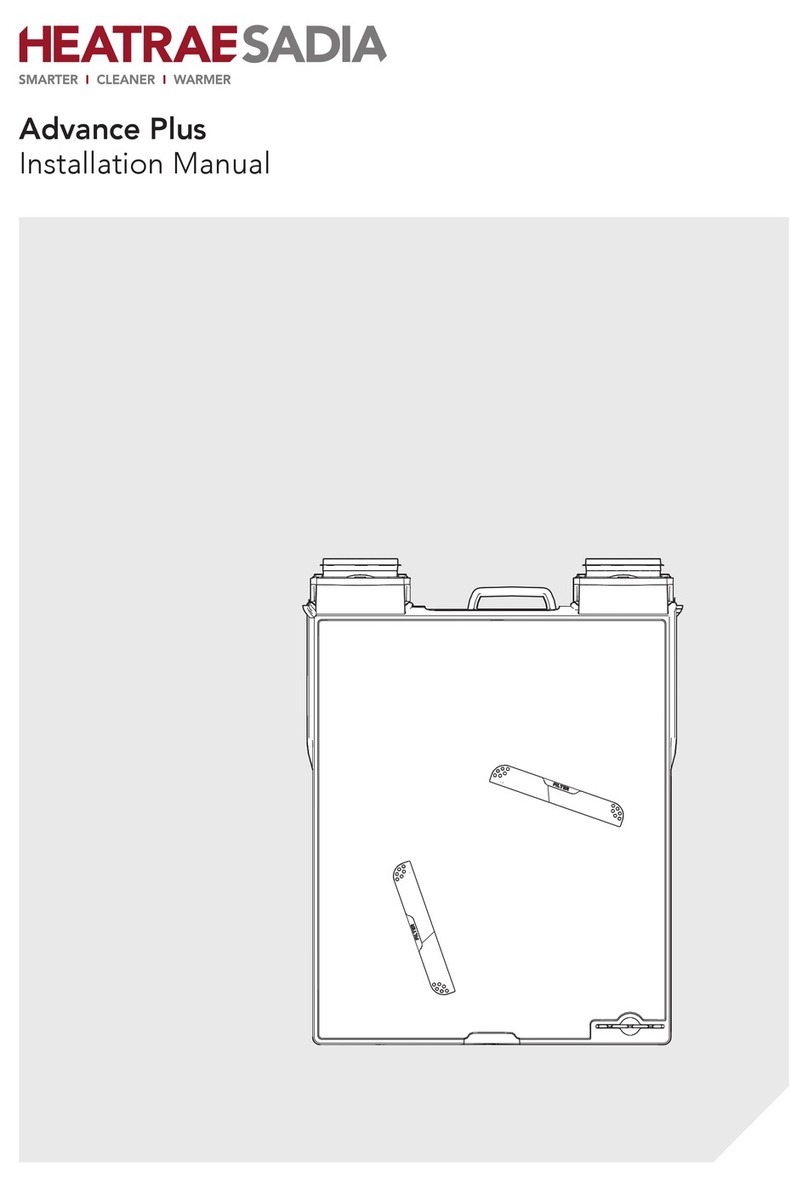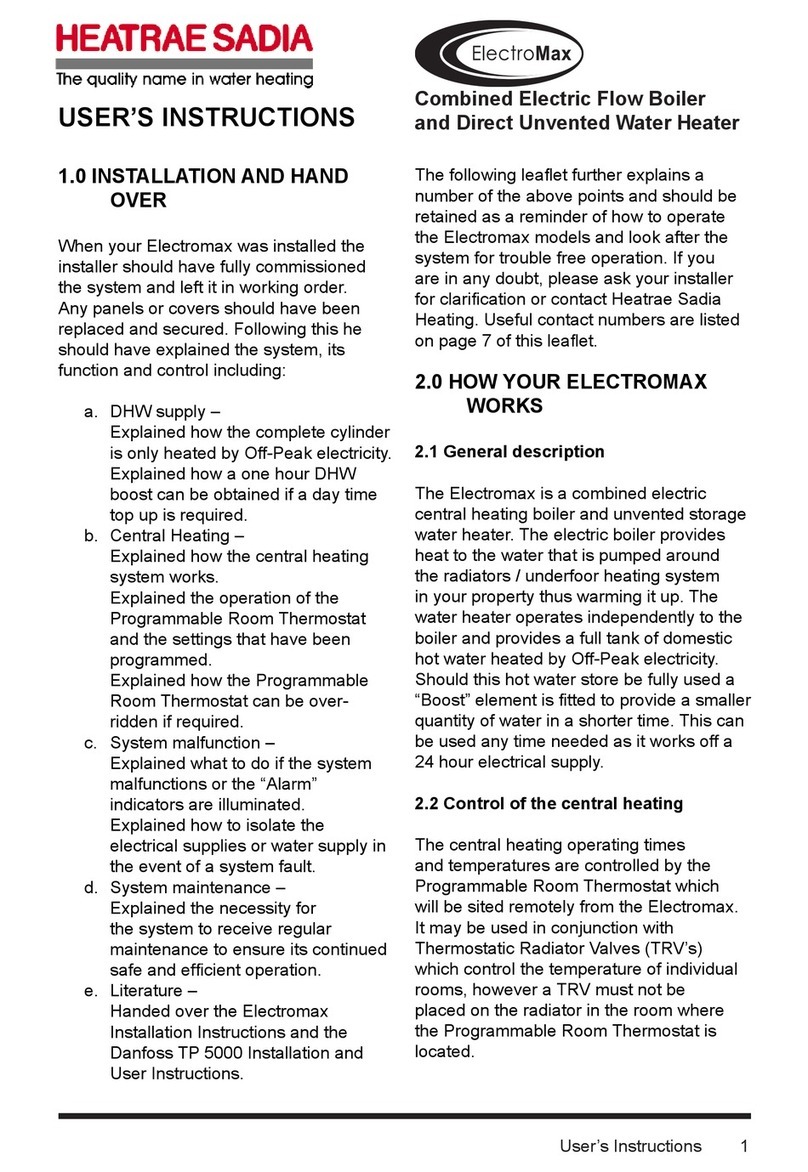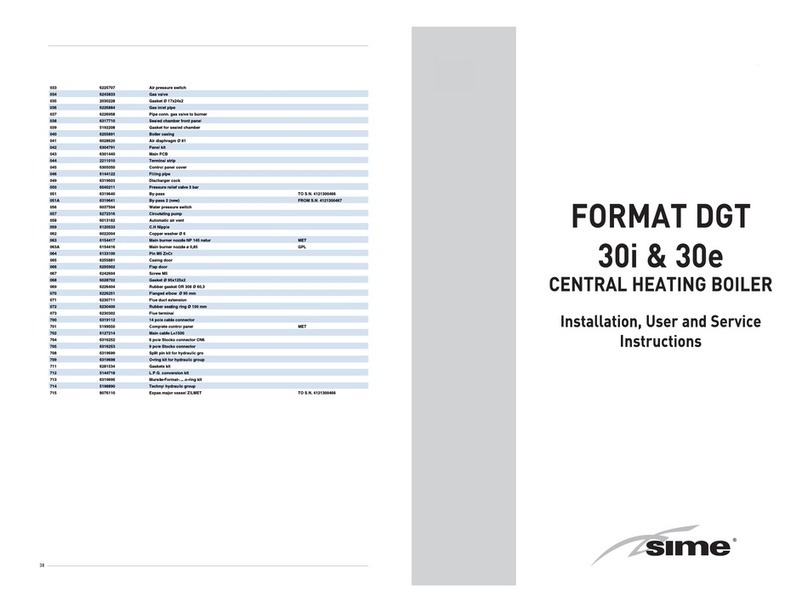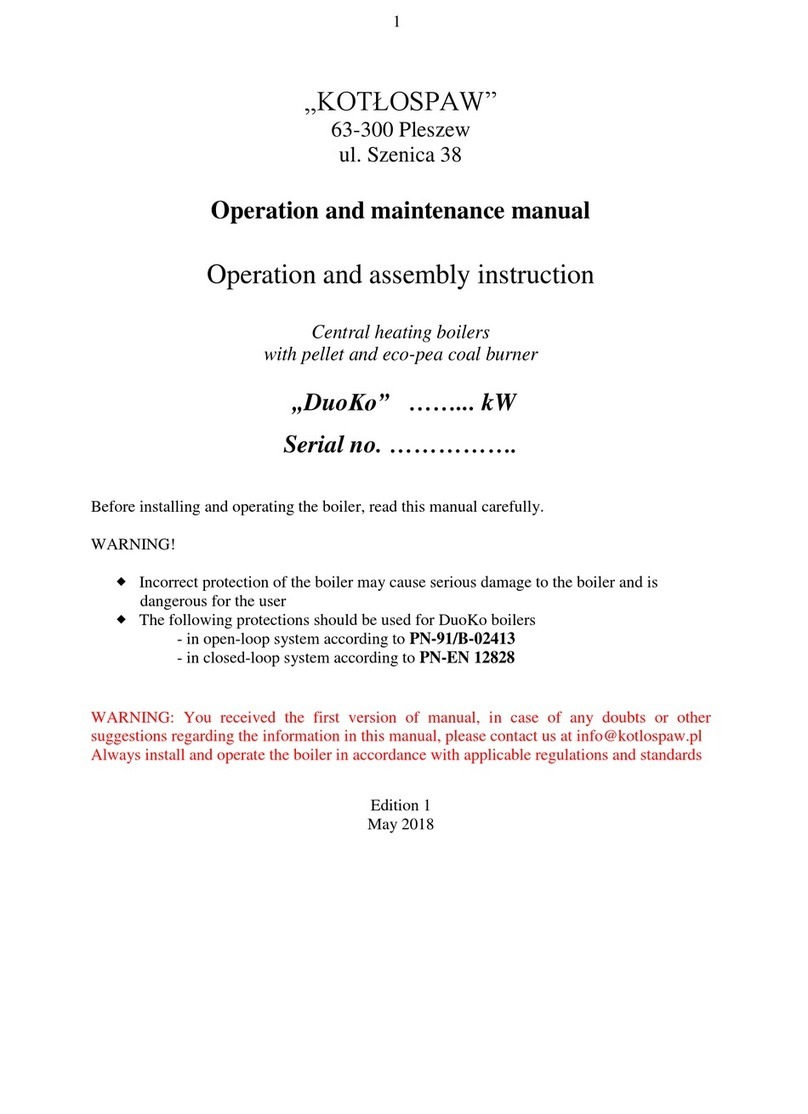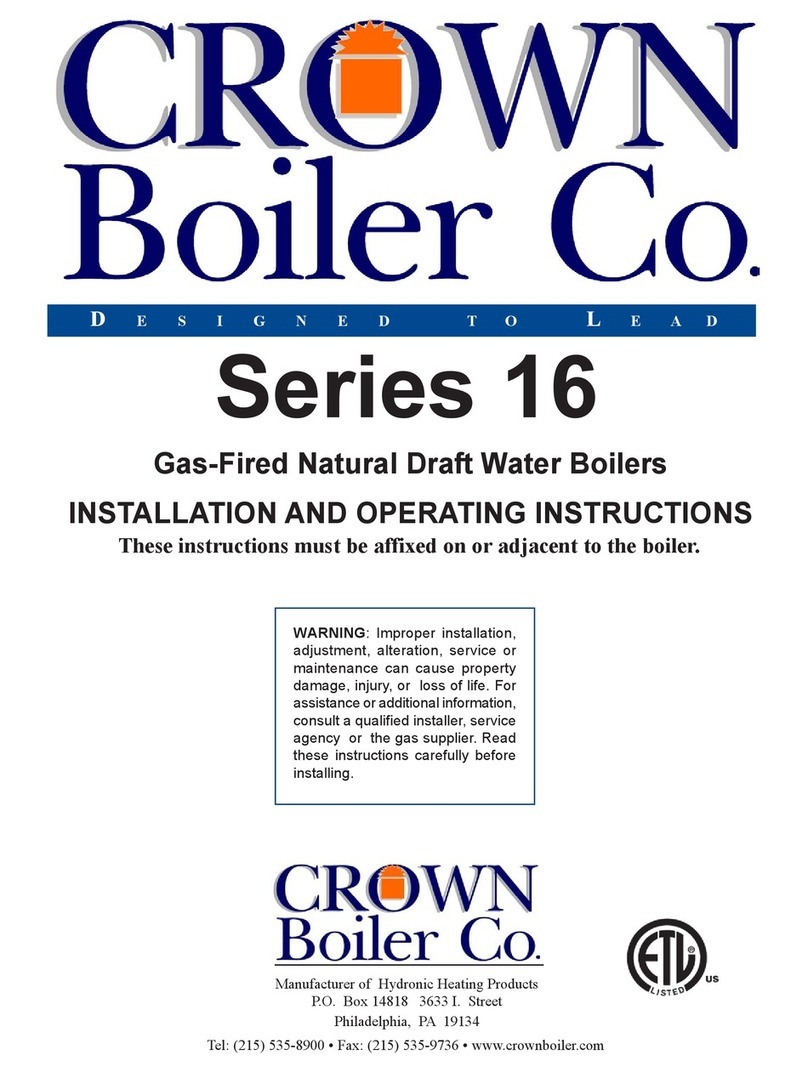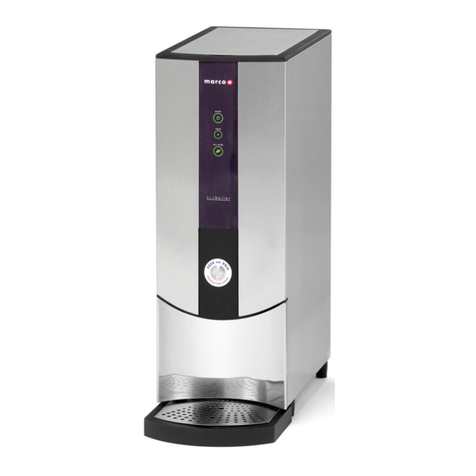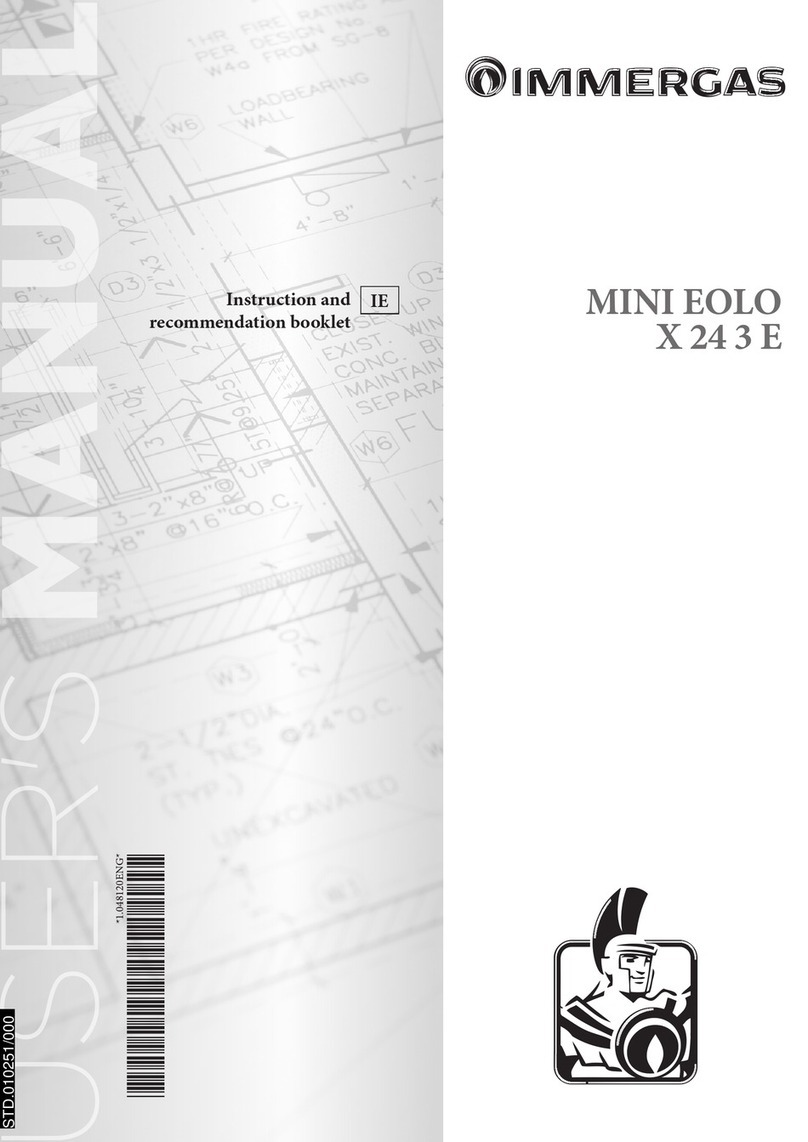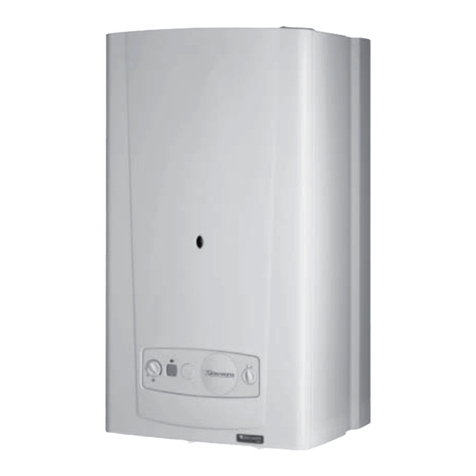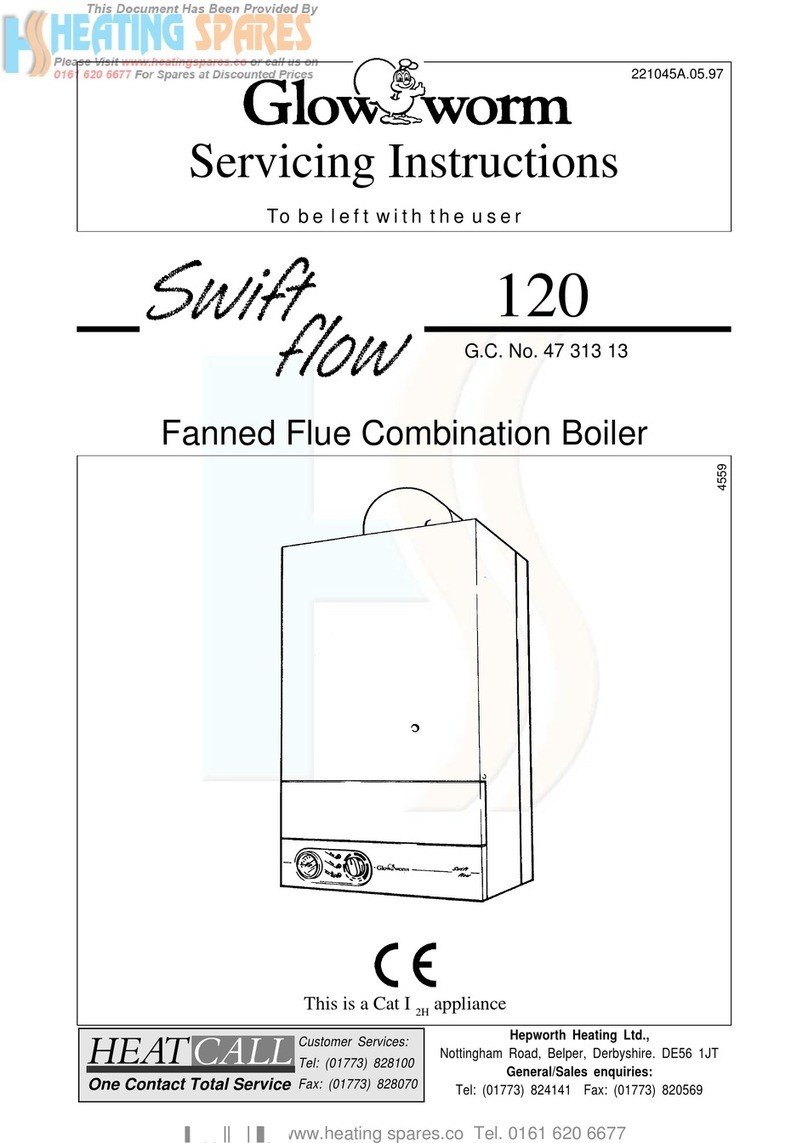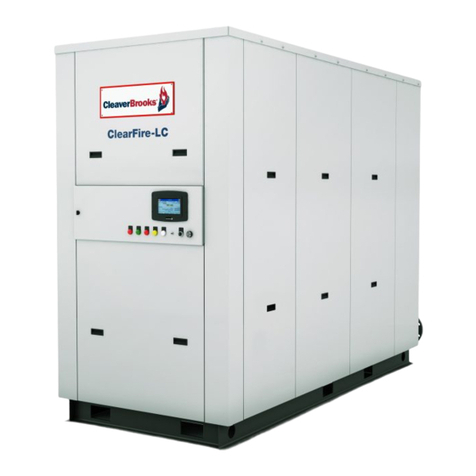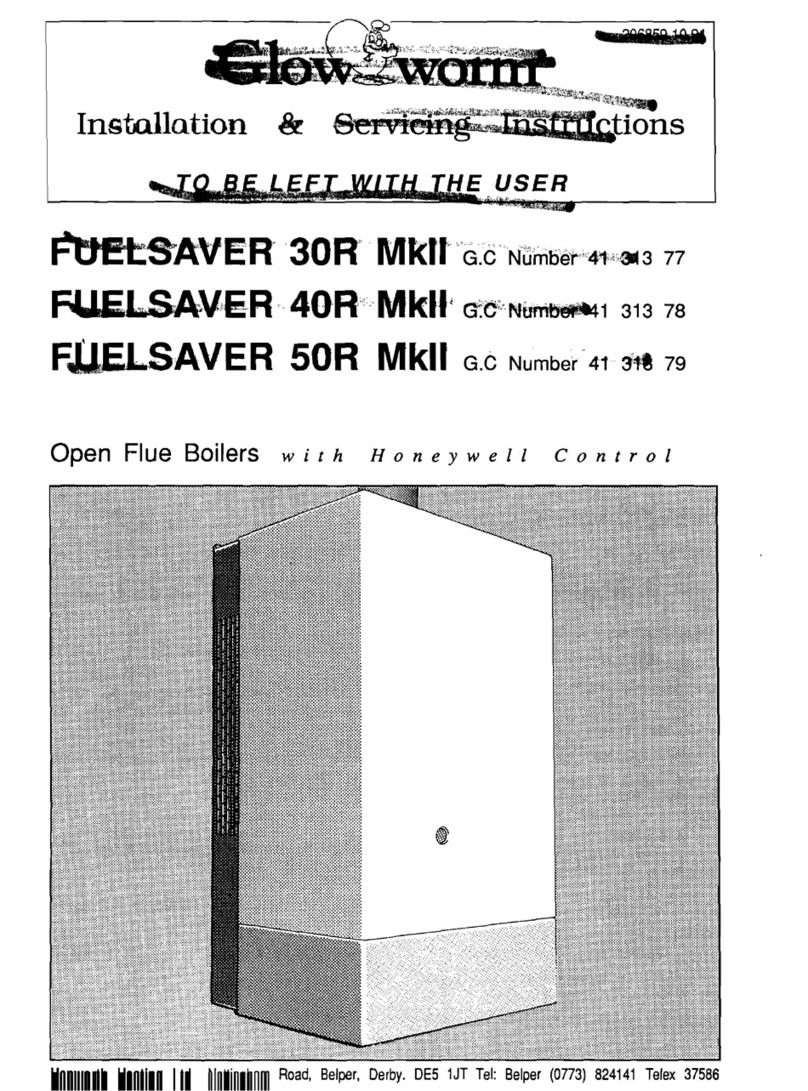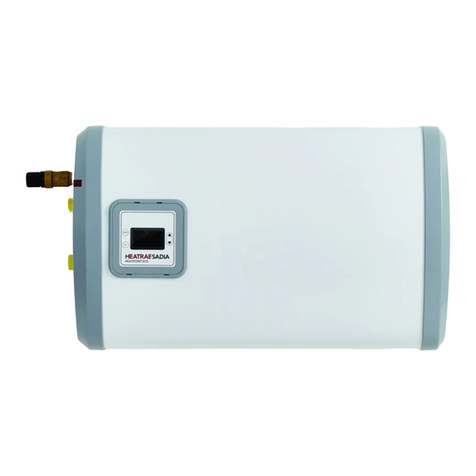20
4. Description of the product
4.1 General description
The Heatrae Sadia HI-MAX INSTANT hydraulic interface
units (HIUs) are a series of wall mounted units that
interface with a community heating system to produce
domestic hot water instantaneously using plate heat
exchanger technology. The apartment's heating system
is indirectly heated through a plate heat exchanger
within the HIU, this separates the community heating
system from the apartment's heating system.
There are two models in the range:
HI-MAX INSTANT ID 5-60 (DHW outputs from 5kW to
62.8 kW using 85OC primary flow).
HI-MAX INSTANT ID 5-80 (DHW outputs from 5kW to
78.75 kW using 85OC primary flow).
The unit is supplied complete with all the necessary
safety and control devices needed to allow connection
to the cold water mains and district heating system.
All these components are preset and should not be
tampered with.
The unit is pre-wired and pre-plumbed to allow quick
and easy connection to the "in-apartment" services.
The unit is supplied packed and can be ordered in
three parts so that the unit can be installed in three
phases. The three parts are:
• 1st fix rail / stand-off assembly
• HIU
• HIU casing set
Phase 1 - 1st Fix. This involves fixing into position the
first fix rail / stand-off assembly and piping all systems
to it, ie the community heating system, cold water
services, hot water outlets and heating flow and return
pipework. There is also a connection point for the
apartment heating safety valve discharge pipe. This
allows the installer to carry out all of the plumbing work
in one visit.
As the 1st fix rail incorporates a series of isolation
valves, once the systems are plumbed in, the pipework
can be flushed, filled and tested.
The first fix rail also incorporates the electrical cable
entry point to the unit. This allows the electrician to
route cables to the unit, with the final termination of
cables taking place in phase 2.
Phase 2 - 2nd Fix. When the site build programme
permits, the installer can fit the HIU to the 1st fix rail.
This entails fixing the HIU to the first fix rail, connecting
the isolation valves to the unit, filling and deaerating
the unit and then wiring up and commissioning.
Phase 3 - 3rd Fix. Once the unit is commissioned
the casings can be removed from their protective
packaging and fitted.
4.2 Operation principle
The HI-MAX INSTANT range of HIUs all produce
domestic hot water in the same way, ie instantaneously
through a plate heat exchanger.
The hot water and heating temperatures programmed
in the unit are factory set to 55OC and 60OC respectively,
but can be adjusted to suit the installation design.
The domestic hot water is set to an optimum
setting of 55OC in the factory in accordance
with the recommendations of HSE HSG274. It is
recommended that this isn't adjusted because
lower temperatures increase the risk of bacterial
growth within the hot water system and higher
temperatures increase the risks associated with
scalding. Higher temperature also increase the rate
of scale formation within the hot water system.
4.2.1 The heart of the unit
At the heart of the HI-MAX INSTANT HIU is a PID
(Proportional Integral Derivative) controller which
both monitors and regulates the heating and hot
water systems in order to optimise performance. PID
controllers regulate the rate of change of an output,
the time intervals that the changes (outputs) take place
and the results are then constantly monitored and
adjusted accordingly to be as close as possible.
4.2.2 DHW Operation
As hot water is drawn off, the flow of water is sensed
by the flow sensor within the cold feed section of the
return hydroblock. The PID controller then activates
the diverter to send primary water (district heating
flow) through the DHW plate heat exchanger. At the
same time, the DHW temperature is monitored by
the DHW temperature sensor located in the flow
hydroblock on the left hand side of the unit. The
PID controller modulates the pressure independent
control valve (PICV) to achieve and maintain the DHW
set temperature. The more hot water that is drawn off,
the more the PICV will open to allow more district heat
through the HIU.
Figure 21: Indirect HIU plate heat exchangers
DHW Plate Heat
Exchanger
Heating Plate
Heat Exchanger




















